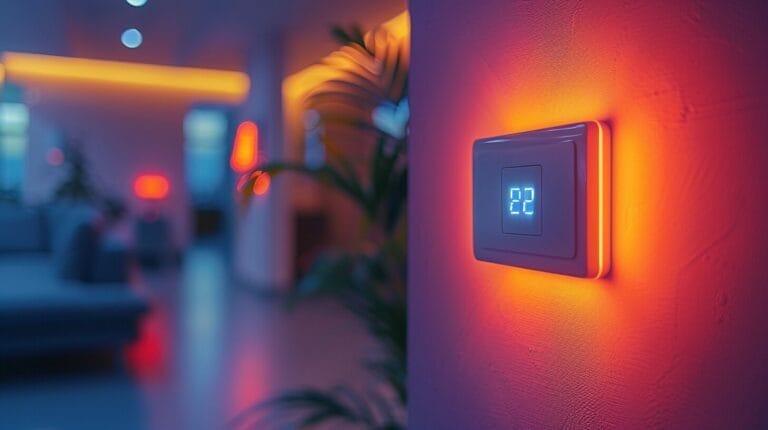Family Room Recessed Lighting Layout Living Room
Achieving the perfect balance of light and ambiance is crucial when planning your family room recessed lighting layout living room. The type and number of lights are determined based on the room size and ceiling height. Considering the layout and furniture arrangement aids in creating a well-lit and inviting space.
Proper placement and spacing of fixtures can transform the room’s ambiance, enhancing both functionality and design. Implementing tailored lighting solutions and safety measures can guarantee excellent coverage and a harmonious blend of light, creating a welcoming and functional environment with innovative lighting solutions.
Key Takeaways
- Consider room size, ceiling height, and furniture placement for optimal lighting design.
- Create a layout plan to determine precise fixture placement for balanced illumination.
- Utilize adjustable fixtures for high ceilings in the family room for flexibility.
- Implement a combination of ambient, task, and accent lighting for a dynamic scheme.
- Ensure proper spacing and placement to avoid over/under-lighting and enhance room functionality.
Understanding the Basics of Recessed Lighting for Family Room and Living Room

When planning recessed lighting for our family room, understanding the basics is essential for creating the desired ambiance. The ceiling height plays a crucial role in determining the type of recessed lights to use. For higher ceilings, adjustable fixtures are ideal for directing light where needed, while for lower ceilings, a standard fixture may suffice.
Developing a layout plan is key to achieving balanced lighting throughout the room. Consider the room’s dimensions, furniture placement, and natural light sources when positioning the fixtures. Proper fixture spacing is essential to avoid over- or under-lighting areas. By following a strategic layout, we can guarantee even distribution of light and prevent any dark spots.
Incorporating accent lighting can add depth and character to the room, enhancing the overall living room ambiance. Whether highlighting artwork, architectural features, or creating a cozy reading nook, accent lighting brings a touch of sophistication to the space.
Sketching the Layout of Your Living Room for Recessed Lighting

To accurately plan the recessed lighting layout in your family room, the first step is sketching the room to determine ideal placement for lighting fixtures. Sketching allows us to visualize the living room’s layout and identify key focal points where recessed lighting can enhance the space. When sketching, consider the room’s dimensions, furniture arrangement, and any architectural features that could influence the placement of lights.
Determining the focal points, such as artwork, seating areas, or decorative elements, will guide where the recessed lighting should be positioned to create a balanced and inviting ambiance.
Utilizing tools and software can assist in creating a precise layout that maximizes the effectiveness of the recessed lighting. These resources can help in accurately mapping out the room, experimenting with different lighting configurations, and ensuring that the final design complements the overall aesthetic of the living room. By carefully sketching the layout and considering focal points, you can create a lighting design that transforms your living room into a welcoming and well-lit space.
Determining the Purpose of Your Lighting and Number of Lights Needed

Understanding the various types of lighting is crucial in determining the purpose of your family room lighting and calculating the ideal number of recessed lights required for the space.
- Ambient lighting provides overall illumination, guaranteeing a comfortable level of brightness in the room.
- Task lighting focuses on specific areas where activities like reading or crafting take place, enhancing functionality.
- Accent lighting highlights architectural features or artworks, adding depth and visual interest to your space.
By combining these lighting types effectively, you can create a dynamic and versatile lighting scheme for your family room.
When considering the number of recessed lights needed, assess the size and layout of the room, the height of the ceiling, and the desired ambiance. Calculating the number of fixtures required for each type of lighting ensures a balanced and well-lit space. Determining the purpose of each light in your family room helps in achieving a harmonious blend of ambient, task, and accent lighting to suit your needs.
Perfecting the Placement and Spacing of Recessed Lights

For ideal lighting distribution, we carefully consider the placement and spacing of recessed lights in the family room. When perfecting the layout, keep in mind the following key factors to achieve an excellent lighting design:
- Ceiling Height: The height of your ceiling plays an essential role in determining the placement of recessed lights. Higher ceilings may require lights to be spaced farther apart to guarantee even illumination across the room.
- Spacing: Tips for determining the best spacing between each light are necessary. Proper spacing guarantees that there are no dark spots in the room and that the light is evenly distributed.
- Lighting Layout: A well-thought-out lighting layout can transform the ambiance of your family room. Strategic placement of recessed lights can highlight architectural features or create a cozy atmosphere.
- Placement: A step-by-step guide to positioning your lights effectively is crucial. Placing lights in the right spots can enhance the functionality of the room and accentuate its design elements.
How Can I Use Dining Room Lighting Techniques in the Family Room?
When considering how to use the best dining room lights in the family room, focus on creating a warm and inviting ambiance. Use a combination of overhead lighting, such as a chandelier or pendant lights, along with task lighting, like table lamps or floor lamps, to achieve a well-lit and cozy space.
Implementing Your Recessed Lighting Project in Your Family Room

Let’s explore how we can bring your recessed lighting project to life in your family room.
When implementing recessed lighting, consider the area you want to illuminate and the size of the space. Tailoring the lighting to the specific dimensions guarantees excellent brightness and coverage.
- Choosing the right trim for your fixtures can enhance the overall aesthetic appeal of the room while directing the light effectively.
- During installation, prioritize safety by following proper procedures and considering professional assistance if needed, especially for complex setups.
- Procuring high-quality materials and tools is essential for a successful project that not only illuminates but also elevates the ambiance of your family room.
By focusing on these aspects of the installation process, you can create a well-lit and inviting space for various activities, from relaxing evenings to lively gatherings.
Conclusion
We hope this guide has helped you understand the basics of recessed lighting and how to layout and implement it in your family room or living room.
By determining the purpose of your lighting, sketching out a layout, and perfecting the placement and spacing of your lights, you can create a well-lit and inviting space for your family to enjoy.
Get started on your recessed lighting project today and transform your living space!
Frequently Asked Questions
How do I determine my lighting needs for my family room?
You can determine your lighting needs by calculating the square footage of the room, considering the function of the space, and the desired ambiance.
What is the general rule for recessed lighting placement in a living room?
A general rule for recessed lighting placement is to space the fixtures about 2.5 to 3 feet apart.
What is the recommended ceiling height for installing recessed lighting in a family room?
The recommended ceiling height for installing recessed lighting is typically 8 to 10 feet.
How can I plan my recessed lighting layout effectively?
You can plan your recessed lighting layout by mapping out the room on paper, considering the locations of doors, windows, and any architectural features.
What are some tips to help with planning my recessed lighting layout in the living room?
Some tips to help with planning your recessed lighting layout include dividing the room into sections, considering the room’s functions, and using a guide to ensure proper spacing.







